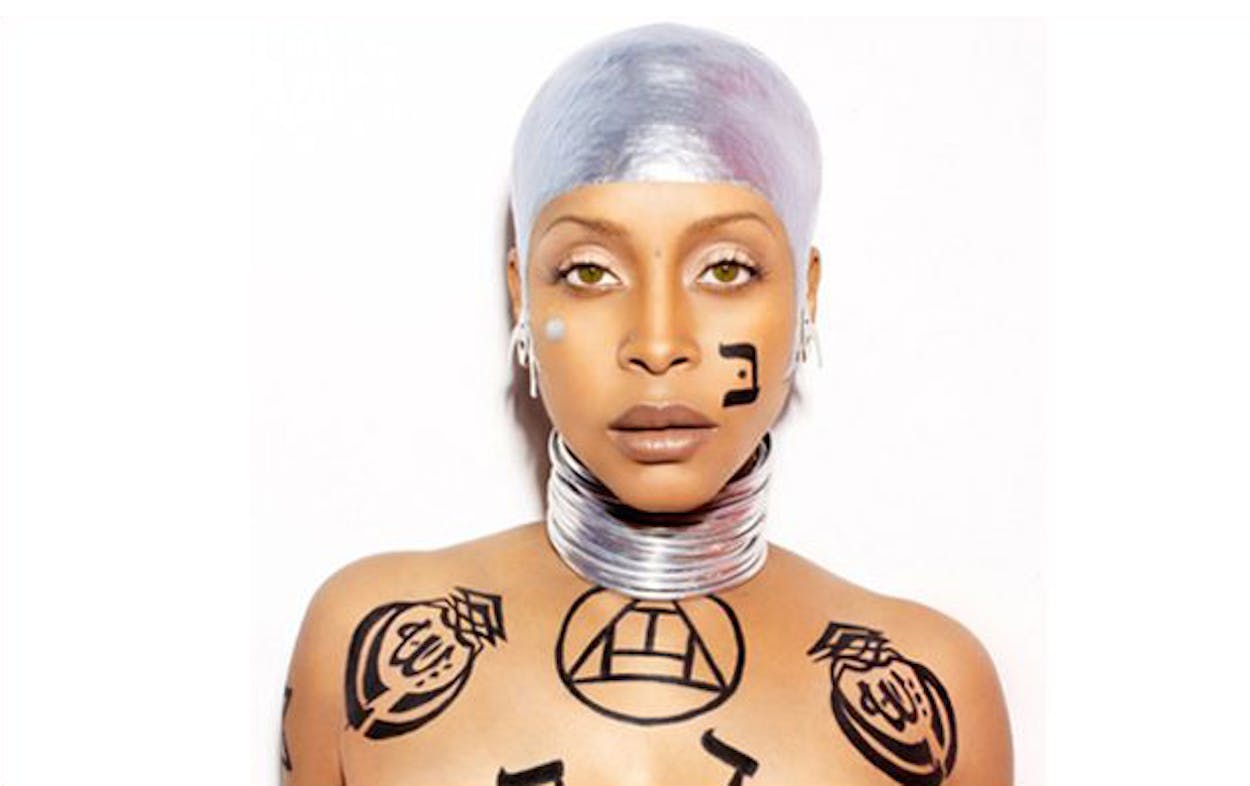Erykah Badu does what she wants. She runs around Dealey Plaza naked, she names her kids amazing things, she stands up for herself. In the most recent episode of freewheeling antics, Badu released an entire mixtape out of nowhere that’s all about phones. Why not?
Badu’s But You Cain’t Use My Phone, released over Thanksgiving holiday, was inspired by her seven-minute take on Drake’s current radio hit “Hotline Bling.” Badu swaps out the song’s earworm hook of “she used to call me on my cell phone” for “you used to call me on my cell-u-lar de-vice at night,” then spends over a minute doing a spoken breakdown while playing the part of an increasingly bizarre voice answering service, before jumping right back into what it would mean when that hotline would bling. Apparently inspired by her reinterpretation, Badu created ten other phone-themed tracks and released a mixtape.
Phones, of course, go back deep as an artistic inspiration for Ms. Badu. “Tyrone,” the definitive single from her seminal 1997 live album, was a break-up jam built around a phone-based punchline about a boyfriend who needs to call his buddy Tyrone to help him move out. That punchline (“you better call Tyrone/but you can’t use my phone“) is right there in the name of her latest release. But it’s not a backward-looking career retrospective that spends too much time on “Tyrone.” Badu is too weird to stay that consistent.
But You Cain’t Use My Phone balances two sides of Badu’s work. She’s long been interested in exploring real concerns about technology in ways that often use digital sounds that (at least on 2008’s New Amerykah Part One) could be downright alienating, but her sound has also been long defined by an organic openness. By the time she came back to New Amerykah Part Two (Return Of The Ankh) in 2010, the esoteric, electronic sounds were out in favor of warmer, more organic sounds.
What took her two albums worth of material to explore the last time she put out new music is repurposed on But You Cain’t Use My Phone in just 37 minutes, though. In the almost six years since her last release, Badu seems no less fascinated by technology and the role it plays in shaping our lives and our futures (“Dial’Afreaq” opens with another robot voice, this one explaining the theory that cell phone frequencies are responsible for bees dying), but she’s also interested in combining that interest with the organic warmth that’s always been one of the defining characteristics of her vocals and instrumentation. Her cover of New Edition’s “Mr. Telephone Man” uses wind instruments, piano, and claps along with its stuttering drum machine, and even when she sings over a largely melody-free beat on “Phone Down,” the lyrics—built around a “I can make you put your phone down” conceit—speak to a yearning for a tech-free experience.
All of this is relevant in the culture right now. It’s no surprise that two of the biggest songs of the year—”Hotline Bling” and Adele’s “Hello”—are built around the themes of phones and disconnection, and it makes a lot of sense for Badu, as an artist who’s always been looking at those ideas, would devote an entire eleven-track mixtape to them. Both as a songwriter and an interpreter of songs like “Hotline Bling” and “Mr. Telephone Man,” Badu is making art that reflects the world we’re all living in, and sometimes that requires going weird places. (We’re going to go ahead and assume that somewhere in the studio, there’s tape of her singing Blondie’s “Call Me” and Prince’s “How Come U Don’t Call Me Anymore” with robo-interludes that got left out as B-sides.) But even as the album looks at phones as technology that simultaneously further both connection and distance, it also draws attention to the fact that these things are both timely and old: The final track, “Hello,” is a collaboration with Badu’s ex Andre 3000, and—after Dre drops a rare rap verse (his first of 2015)—the two close the song with a duet on a version of Todd Rundgren’s 1972 single “Hello, It’s Me.” Badu may have things to say about the dominance of phones in our lives right now, but she also recognizes that some of this material continues a long-standing trope.








